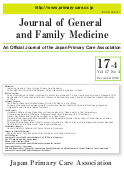Current issue
Displaying 1-25 of 25 articles from this issue
- |<
- <
- 1
- >
- >|
-
2016 Volume 17 Issue 4 Pages H4
Published: 2016
Released on J-STAGE: December 27, 2016
Download PDF (1011K) -
2016 Volume 17 Issue 4 Pages C4
Published: 2016
Released on J-STAGE: December 27, 2016
Download PDF (30K) -
2016 Volume 17 Issue 4 Pages E4
Published: 2016
Released on J-STAGE: December 27, 2016
Download PDF (31K)
Editorials
-
Article type: Editorials
2016 Volume 17 Issue 4 Pages 267-269
Published: December 18, 2016
Released on J-STAGE: December 27, 2016
Download PDF (45K) -
Article type: Editorials
2016 Volume 17 Issue 4 Pages 270-271
Published: December 18, 2016
Released on J-STAGE: December 27, 2016
Download PDF (34K)
Review Articles
-
Article type: Review Articles
2016 Volume 17 Issue 4 Pages 272-275
Published: December 18, 2016
Released on J-STAGE: December 27, 2016
Download PDF (782K) -
Article type: Review Articles
2016 Volume 17 Issue 4 Pages 276-288
Published: December 18, 2016
Released on J-STAGE: December 27, 2016
Download PDF (2632K)
Original Articles
-
Article type: Original Articles
2016 Volume 17 Issue 4 Pages 289-298
Published: December 18, 2016
Released on J-STAGE: December 27, 2016
Download PDF (617K) -
Article type: Original Articles
2016 Volume 17 Issue 4 Pages 299-306
Published: December 18, 2016
Released on J-STAGE: December 04, 2022
Download PDF (88K)
Case Reports
-
Article type: Case Reports
2016 Volume 17 Issue 4 Pages 307-310
Published: December 18, 2016
Released on J-STAGE: December 27, 2016
Download PDF (1649K) -
Article type: Case Reports
2016 Volume 17 Issue 4 Pages 311-314
Published: December 18, 2016
Released on J-STAGE: December 27, 2016
Download PDF (671K) -
Article type: Case Reports
2016 Volume 17 Issue 4 Pages 315-318
Published: December 18, 2016
Released on J-STAGE: December 27, 2016
Download PDF (1491K) -
Article type: Case Reports
2016 Volume 17 Issue 4 Pages 319-322
Published: December 18, 2016
Released on J-STAGE: December 27, 2016
Download PDF (642K) -
Article type: Case Reports
2016 Volume 17 Issue 4 Pages 323-327
Published: December 18, 2016
Released on J-STAGE: December 27, 2016
Download PDF (1307K) -
Article type: Case Reports
2016 Volume 17 Issue 4 Pages 328-331
Published: December 18, 2016
Released on J-STAGE: December 27, 2016
Download PDF (235K)
Preliminary Reports
-
Article type: Preliminary Reports
2016 Volume 17 Issue 4 Pages 332-335
Published: December 18, 2016
Released on J-STAGE: December 27, 2016
Download PDF (50K)
Images in Clinical Medicine
-
Article type: Images in Clinical Medicine
2016 Volume 17 Issue 4 Pages 336-337
Published: December 18, 2016
Released on J-STAGE: December 27, 2016
Download PDF (699K)
-
2016 Volume 17 Issue 4 Pages 338
Published: December 18, 2016
Released on J-STAGE: December 27, 2016
Download PDF (27K) -
2016 Volume 17 Issue 4 Pages 339-340
Published: December 18, 2016
Released on J-STAGE: December 27, 2016
Download PDF (36K) -
2016 Volume 17 Issue 4 Pages 341-344
Published: December 18, 2016
Released on J-STAGE: December 27, 2016
Download PDF (38K) -
2016 Volume 17 Issue 4 Pages 345
Published: December 18, 2016
Released on J-STAGE: December 27, 2016
Download PDF (23K) -
2016 Volume 17 Issue 4 Pages 346-349
Published: December 18, 2016
Released on J-STAGE: December 27, 2016
Download PDF (56K) -
2016 Volume 17 Issue 4 Pages 350
Published: December 18, 2016
Released on J-STAGE: December 27, 2016
Download PDF (19K) -
2016 Volume 17 Issue 4 Pages 351
Published: December 18, 2016
Released on J-STAGE: December 27, 2016
Download PDF (27K) -
2016 Volume 17 Issue 4 Pages 352
Published: December 18, 2016
Released on J-STAGE: December 27, 2016
Download PDF (26K)
- |<
- <
- 1
- >
- >|
